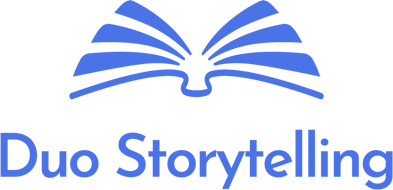Point of view refers to the perspective from which a story is told. It’s the eyes the reader sees through to experience the story. At a glance, point of view can seem unimportant when compared to other story elements like plot and characters, but when chosen with care, point of view can be a powerful tool to draw a reader into a compelling narrative.
For a seasoned writer, choosing a point of view might come as easy as choosing their breakfast each morning. But for newer writers—or authors trying new genres—the decision can be more daunting than trying to pick your favorite character. Given that the three types of narrative perspectives have their benefits, it’s important to consider how the chosen narrator can change a story.
Different Points of View
Before we dive into how perspective can affect the storytelling process, let’s go back to the basics.
What are the three types of narrative point of view?
First Person
First-person narration uses personal pronouns such as I and me in order to tell the story. The storytelling in first person comes from the protagonist relaying their thoughts and experiences to the reader or from a side character describing the protagonist’s story.
Second Person
Second-person point of view uses pronouns like you to address the reader directly. In second person, the narrator is guiding the reader through the story as if the reader were the protagonist or another character in the story. With this perspective, the reader experiences the events of the plot firsthand.
Third person
In third-person point of view, the author narrates events from outside of the story. Characters are referred to by name or the pronouns he, she, and they, and the author has the option of focusing the story on one or multiple characters. However, third-person perspective comes with some extra nuance: third-person limited or third-person omniscient? In third-person limited perspective, the narrator focuses on one character in each scene and only uses information that focus character has access to—much like first person. (In multiple third-person limited perspective, an author can even have the focus character change from chapter to chapter or scene to scene!) Third-person omniscient, as the name implies, gives the narrator total visibility into the events, thoughts, and emotions of any character at any point in the story.
Choosing a Perspective for Your Story
So how do you figure out which perspective is the right option for you? Well, it will depend on the experience you hope to provide your reader. You may have noticed that the different narrative perspectives listed above change the distance between the story and the reader. First person will keep a reader “tight” with the story, letting them witness a character’s actions and emotions in their own words, whereas third person gives the reader more of an open, bird’s-eye view.
First Person
First-person narratives put a few important tools in the hands of the author. By receiving the story through an individual’s thoughts and actions, a reader gains a more intimate understanding of that character. This increased closeness can help make the story feel more real to the reader. First-person narratives also offer a unique amount of control over how much information a reader is given. By virtue of being told a story through a character’s own words, the reader can only access information that the character would already have at their disposal—which may not be much! Author’s can capitalize this to help generate intrigue, tension, or even humor, especially when the character’s assumptions about the world don’t line up with their reality.
Second Person
Second-person perspective shines in its uniqueness. Often considered too eccentric or challenging to try, second-person perspective offers an immersive experience that no other point of view can match. While it can be quite difficult to hook a reader into feeling like they are part of a story, it can create an unforgettable experience when done well.
Third Person
Like first person, third-person perspective can offer significant insight into the thoughts and feelings of the cast. This time it’s from a distance. But what third person lacks in intimacy it makes up for in opportunity. Because of its detached narrative stance, the author can give the reader a broader view. This allows them to give and a greater sense of scale and contrast in written work. That dynamic can be important in complex storytelling that spans worlds, factions, and so on. In these stories, a reader needs a better understanding of the social and cultural structures of your chosen world. With a wider scope to choose from, a third-person narrator can operate much like a camera does in a film: zooming in and out of narrative arcs and weaving them together into a beautiful tapestry.
There is no “right” choice for a point of view, only the one that feels best to you. If you still find yourself struggling to find the right one for you, consider asking yourself a few questions. How close do you want your reader to feel to your characters? What information is essential to the story (and who has access to it)? Who would offer a more interesting narrative voice, a participant or observer? Your answer is likely hiding in plain sight!
Looking for other articles on writing and storytelling? We’ve got you covered.


